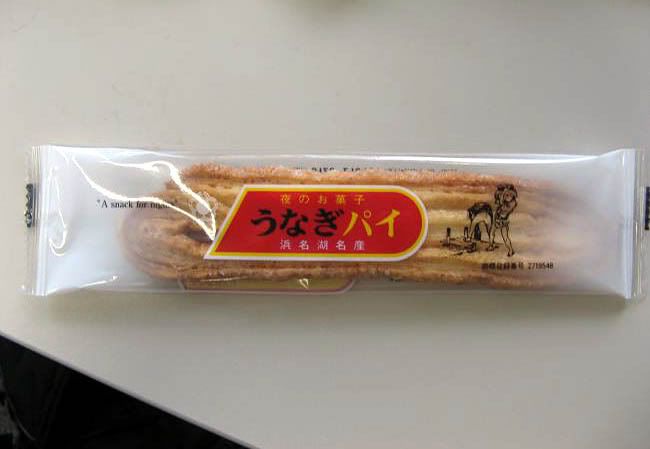It's grilled in a sticky, slightly sweet-and-tangy sauce (it tastes a little like barbecue) and served over rice, but there are variations in the specifics beyond that. And because you can get it fresh here every day, the area around Hamana-ko is famous for the abundance and quality of its unagi restaurants.

So much so that it'd be ridiculous to visit Hamamatsu for any length of time and not sample unagi. There are so many excellent places to try this dish, it's difficult to put a name to the best or most representative. The most famous one is located next to the Meitetsu Hotel, just across from Hamamatsu Station.
As famous as it is, I've forgotten the name, but it's very easy to find, next to the corner along the sidewalk. If you're in town for an hour or so, take time to walk across and have lunch or dinner there.
The food is delicious, the staff is friendly (when I went there with my then-girlfriend, she translated for me their concerns I wouldn't like their unagi). But... it's a little expensive! I guess with reputation comes a price.
The reason I'm on this unagi kick is I recently tried the other eel-related specialty that put Hamamatsu on the culinary map... unagi pie.
Which is not a pie at all. Instead, it's a very dry, crispy cracker or cookie. It's made from powdered unagi bones and while that doesn't sound very appetizing, the unagi pie itself is actually pretty nice. Like many Japanese sweets, its sugary qualities are very slight indeed. Just enough to recognize, with a taste somewhat similar to caramel popcorn.


Or like that old cereal Super Sugar Crisps, minus some of the tooth-rottingly overwhelming sugar load. You know the one, right? The one with the bear who sounds like Bing Crosby and can't get enough of Super Sugar Crisps.
Because he's a junkie.
One of our students is attending college in Kamloops, Canada (greatest city name of all time, by the way... now a breakfast cereal endorsed by Cameron Diaz!). She came back for summer vacation and before she returned to British Columbia, she kindly left a box of unagi pie for everyone at my school.
Unagi pie holds such a special place in Hamamatsu's heart that people will actually tour the local factories that make it. If someone takes a vacation here and goes back to their office, unagi pie is the obligatory gift of choice.
By the way, salt water eel is anago. I've also eaten that, with their little heads gazing up at me, their mouths opening and closing as they tried to breath life into organs that were no longer there.
Speaking of obligatory gifts, if you're Japanese and you go for a trip, it's customary for you to bring "omiyage" (oh-me-ah-gay) for your coworkers. Omiyage usually consists of food and most local giftshops sell nice boxes of local treats. For example, Hamamatsu' unagi pie or Kyoto's o-manju (small buns with sweet bean paste inside). Japanese vacationers returning from Hawaii usually gift their coworkers with macadamia candy, and if they've been to Vancouver, they usually bring small bottles of maple syrup. Those coming back from Australia bring fried koala or chocolate covered kangaroo testicles, while those who've spent time in Detroit bring marzipan bullets.
In our classes we usually translate omiyage as "souvenir." Yesterday in Bentenjima, we had a short discussion all about this concept. Is souvenir the best translation? Usually a souvenir is simply something one buys to remember a special vacation, such as a Disney t-shirt, a googly-eyed pecan or a glass bong.
We decided gift is a much better translation, closer to the spirit of the actual custom. On the other hand, who am I to go against years of ESL wisdom? We'll probably still say souvenir.
No comments:
Post a Comment